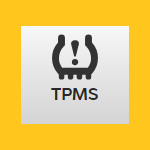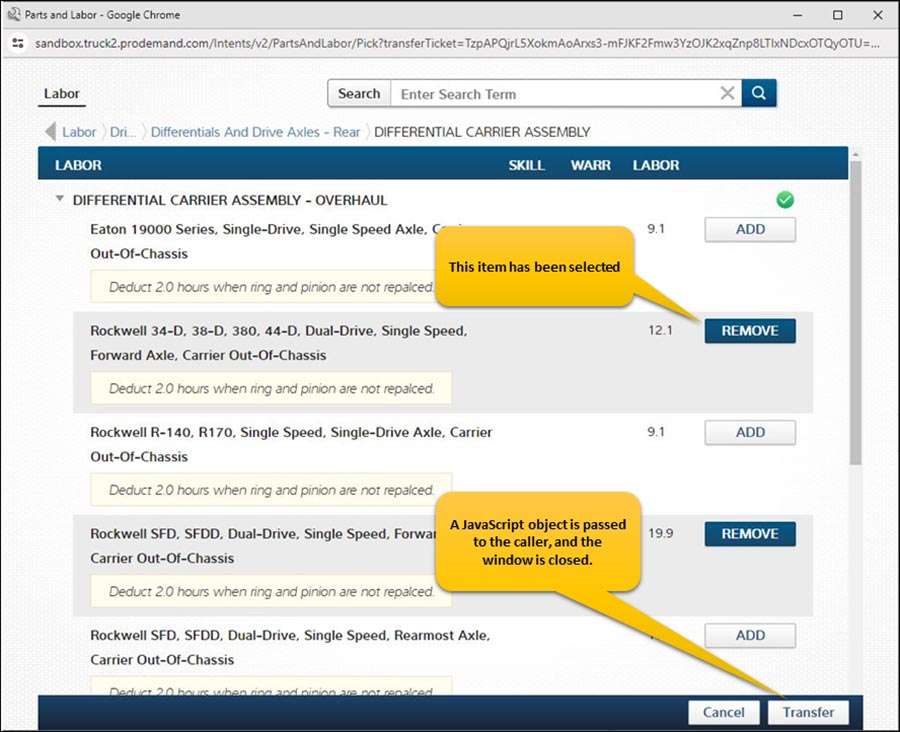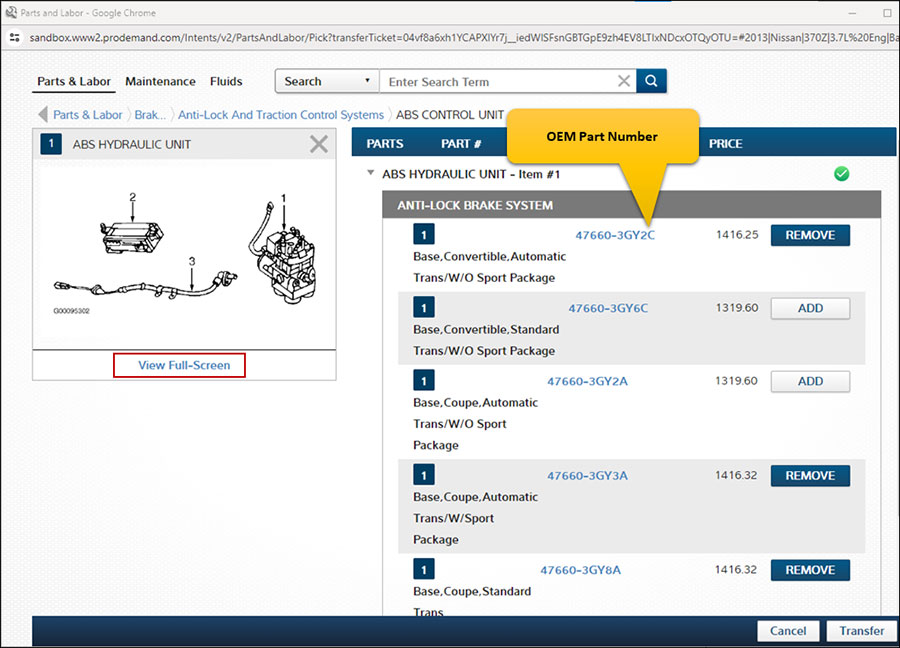
SUBJECT VEHICLE: 2008 – 2013 Buick Enclave.
RELEARN PROCEDURE? Yes.
SPECIAL TOOLS NEEDED? TPMS sensor activation tool (J-46079) may be used. You also need the tire pressure monitor diagnostic tool (EL-46079/J-46079).
The tire pressure monitoring system (TPMS) on the 2008–2013 Buick Enclave alerts the driver when a large change in the pressure of one tire exists while the vehicle is being driven.
The system also will display individual tire pressures and their locations on the driver information center (DIC). The TPMS system uses the uses the engine control module (ECM), body control module (BCM), instrument panel cluster (IPC), DIC, remote control door lock receiver (RCDLR), a radio frequency (RF) transmitting pressure sensor in each wheel/tire assembly, and the serial data circuit to perform the system functions. When the vehicle is stationary, the sensors go into stationary mode.
In this mode, the sensors transmit once every 60 minutes to minimize sensor battery consumption. As vehicle speed increases, the sensors go into drive mode, in which they transmit once every 60 seconds. NOTE: The sensor’s pressure accuracy is about 2 psi (14 kPa) at temperatures from 14 degrees Fahrenheit to 158 degrees F (-10 Celsius to 70 degrees C). The RCDLR receives and translates the data contained in each sensor transmission, then sends the tire pressure and tire location data to the DIC.
When the TPMS detects a significant loss or gain of tire pressure, a “CHECK TIRE PRESSURE” message will appear on the DIC, and the low tire pressure warning indicator is displayed on the IPC.
The RCDLR has the ability to detect malfunctions within the TPMS. Any malfunctions detected will cause the DIC to display a “SERVICE TIRE MONITOR” warning message.
Tire pressure monitor warning indicators
When a low tire pressure condition is detected, the TPMS illuminates the low tire pressure warning light located on the instrument cluster. A message to check the pressure in a specific tire displays in the DIC. The TPMS warning light and the DIC warning message come on at each ignition cycle until the tires are inflated to the correct inflation pressure. Using the DIC, tire pressure levels can be viewed. When the system detects a malfunction, the low tire warning light flashes for about one minute and then stays on for the remainder of the ignition cycle.
A DIC warning message also displays. The malfunction light and DIC warning message come on at each ignition cycle until the problem is corrected.
NOTE: The low tire pressure warning light may come on in cool weather when the vehicle is first started, and then turn off as the vehicle is driven.
This could be an early indicator that the tire’s air pressure is getting low and needs to be inflated to the proper pressure.
Reset procedures
NOTE: If a tire pressure sensor or the RCDLR is replaced, or if the wheels have been rotated, tire pressure sensors must be relearned. The relearn procedure can be performed using either the keyless entry system or a scan tool. See “Using keyless entry system” or DIC or “Using scan tool.” When a low tire pressure condition is detected, the TPMS illuminates the low tire pressure warning light located on the instrument cluster. A message to check the pressure in a specific tire will be displayed in the DIC. Check the air pressure of all tires and adjust to specification. Ensure warning indicators go out after a few minutes.
Tire pressure sensor relearn
Once the learn mode has been enabled, each of the sensor’s unique identification (ID) codes can be learned into the RCDLR’s memory. When a sensor’s ID has been learned, the RCDLR sends a serial data message to the IPM to sound a horn chirp. This verifies the sensor has transmitted its ID and the RCDLR has received and learned it. The RCDLR must learn the sensor IDs in the proper order to determine correct sensor location. The first learned ID is assigned to left front, the second to right front, third to right rear and fourth to left rear. Each sensor takes a pressure measurement sample once every 30 seconds while in stationary mode.
If the tire pressure increases, or decreases by more than 1.6 psi (11 kPa) from the last pressure measurement, another measurement will occur immediately to verify the change in pressure. If a pressure change has indeed occurred, the sensor transmits a re-measure mode transmission.
When the RCDLR receives a re-measure mode transmission while in sensor learn mode, it will assign that sensor’s ID to the location on the vehicle relative to the order in which it was learned. The TPMS will cancel the learn mode if more than two minutes have passed and no sensors have been learned, or if the RCDLR has been in learn mode for more than five minutes. If the learn mode is canceled before any IDs are learned, the RCDLR will remember all previously stored IDs and their locations.
As soon as the first sensor ID is learned, all other IDs are erased from the RCDLR’s memory.
NOTE: Before proceeding with the steps below, ensure that no other sensor learn procedure is being performed simultaneously, or that no tire pressures are being adjusted on another TPMS-equipped vehicle within close proximity.
NOTE: In the following procedures, a TPMS sensor activation tool (J-46079) may be used in place of increasing/decreasing pressures to enable sensor. To use, place activator antenna against the tire sidewall close to the wheel rim at the valve stem location, and then press and release the ACTIVATE button.
NOTE: If TPMS sensor activation tool (J-46079) is used, and vehicle is having trouble entering relearn mode, check the batteries in the activation tool. Low batteries may allow some functions to work, but not allow the vehicle to perform the learn function. When the internal battery is fresh (fully charged), the indicator is “full” or all dark. When the battery is depleted, the indicator shows “empty” or all light.
Using the keyless entry system or DIC:
1) Turn the ignition switch to ACC position. Apply the parking brake.
2) Initiate the TPMS learn mode using one of the following procedures:
- On vehicles equipped with keyless entry, simultaneously press the keyless entry transmitter’s lock and unlock buttons until a double horn chirp sounds, indicating the learn mode has been enabled. The left front turn signal will also be illuminated.
- On vehicles not equipped with keyless entry, press and release the driver information center (DIC) INFO button until the TIRE LEARN message appears on the DIC display. Press and hold the SET/RESET button until a double horn chirp sounds indicating the Learn Mode has been enabled. The left front turn signal also will be illuminated.
3) Starting with the left front tire, activate the tire pressure sensor using one of the following methods:
- Increase/decrease the tire pressure for eight to 10 seconds then wait for a horn chirp. The horn chirp may occur before or up to 30 seconds after the eight to 10 second pressure increase/decrease time period has been reached. Once the horn chirp has sounded, the sensor information is learned and the turn signal in the next location to be learned will illuminate.
Hold the antenna of the Tire Pressure Monitor Diagnostic Tool (EL-46079/J-46079) aimed upward against the tire sidewall close to the wheel rim at the valve stem location. Press and release the activate button and wait for a horn chirp. Once the horn chirp has sounded, the sensor information is learned and the turn signal in the next location to be learned will illuminate.
4) After horn chirp has sounded and the right front turn signal is illuminated, repeat procedure for the next three sensors in the following order: right front, right rear and left rear.
5) After left rear sensor has been learned, a double horn chirp will sound, indicating all four sensor IDs have been learned. Turn ignition switch to OFF position. Adjust all tire pressures to specification.
Using scan tool
NOTE: Before proceeding with the steps below, ensure that no other sensor learn procedure is being performed simultaneously, or that no tire pressures are being adjusted on another TPMS-equipped vehicle within close proximity.
1) Connect scan tool. Turn ignition switch to ACC position. Apply parking brake.
2) Using scan tool, select “SPECIAL FUNCTIONS.”
3) Select “SENSOR LEARN MODE ENABLE”, and press ENTER key.
4) Press ON soft key. A double horn chirp will sound, indicating the learn mode has been enabled.
5) Starting with the left front tire, activate the tire pressure sensor using one of the following methods:
Increase/decrease the tire pressure for eight to 10 seconds then wait for a horn chirp. The horn chirp may occur before or up to 30 seconds after the eight to 10 second pressure increase/decrease time period has been reached. Once the horn chirp has sounded, the sensor information is learned and the turn signal in the next location to be learned will illuminate.
Hold the antenna of the Tire Pressure Monitor Diagnostic Tool (EL-46079/J-46079) aimed upward against the tire sidewall close to the wheel rim at the valve stem location. Press and release the activate button and wait for a horn chirp. Once the horn chirp has sounded, the sensor information is learned and the turn signal in the next location to be learned will illuminate.
6) After the horn chirp has sounded, repeat the procedure for the next three sensors in the following order: right front, right rear and left rear.
7) After the left rear sensor has been learned, a double horn chirp will sound, indicating all four sensor IDs have been learned. Turn the ignition switch to OFF position. Adjust all tire pressures to specification.
Read more:






